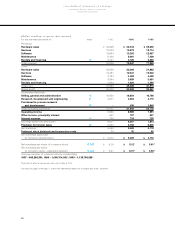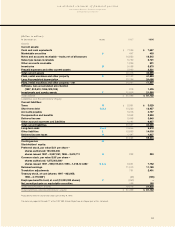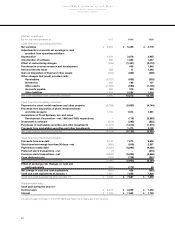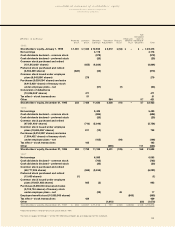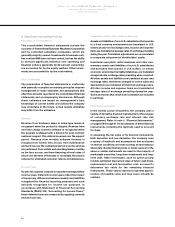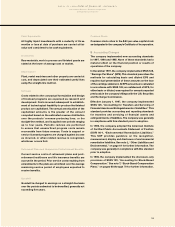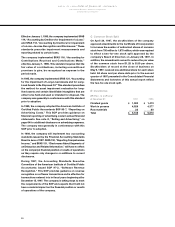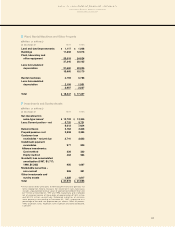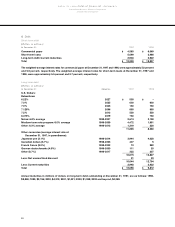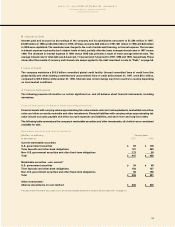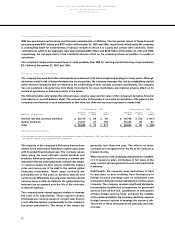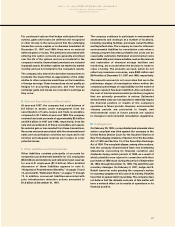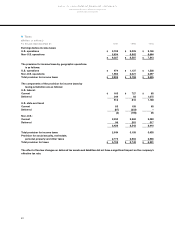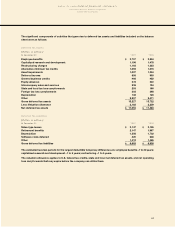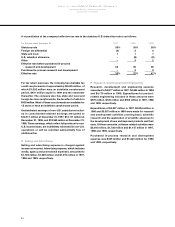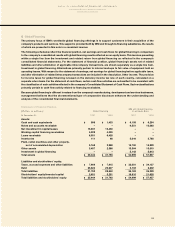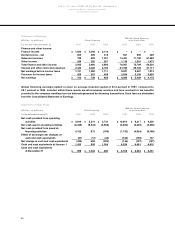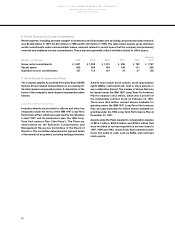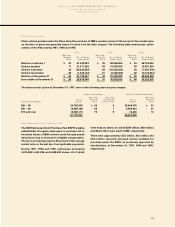IBM 1997 Annual Report Download - page 62
Download and view the complete annual report
Please find page 62 of the 1997 IBM annual report below. You can navigate through the pages in the report by either clicking on the pages listed below, or by using the keyword search tool below to find specific information within the annual report.
60
Financial Instruments Off-Balance Sheet (excluding derivatives)
IBM has guaranteed certain loans and financial commitments of affiliates. The fair market values of these financial
guarantees were $861 million and $787 million at December 31, 1997 and 1996, respectively. Additionally, the company
is contingently liable for commitments of various ventures to which it is a party and certain other contracts. These
commitments, which in the aggregate were approximately $600 million and $400 million at December 31, 1997 and 1996,
respectively, are not expected to have a material adverse effect on the company’s financial position or results of
operations.
The company’s dealers had unused lines of credit available from IBM for working capital financing of approximately
$2.1 billion at December 31, 1997 and 1996.
Derivative Financial Instruments
The company has used derivative instruments as an element of its risk management strategy for many years. Although
derivatives entail a risk of nonperformance by counterparties, the company manages this risk by establishing explicit
dollar and term limitations that correspond to the credit rating of each carefully selected counterparty. The company
has not sustained a material loss from these instruments nor does it anticipate any material adverse effect on its
results of operations or financial position in the future.
The following table summarizes the notional value, carrying value and fair value of the company’s derivative financial
instruments on- and off-balance sheet. The notional value at December 31 provides an indication of the extent of the
company’s involvement in such instruments at that time, but does not represent exposure to market risk.
At December 31, 1997 At December 31, 1996
Notional Carrying Fair Notional Carrying Fair
(Dollars in millions) Value Value Value*Value Value Value*
Interest rate and currency contracts $24,774 $29 $84 $18,700 $(70) $(117)
Option contracts 14,211 41 193 10,100 92 81
_________________ __________ ____________ _________________ __________ ____________
Total $38,985 $70 $277 $28,800 $22 $(36)
Bracketed amounts are liabilities.
*The estimated fair value of derivatives both on- and off-balance sheet at December 31, 1997 and 1996, consists of assets of $561 million and $258 million
and liabilities of $304 million and $294 million, respectively.
notes to consolidated financial statements
International Business Machines Corporation
and Subsidiary Companies
The majority of the company’s derivative transactions
relates to the matching of liabilities to assets associated
with its global financing business. The company issues
debt, using the most efficient capital markets and
products, which may result in a currency or interest rate
mismatch with the underlying lease. Interest rate swaps
or currency swaps are then used to match the interest
rates and currencies of its debt to the related global
financing receivables. These swap contracts are
principally one to five years in duration. Interest and
currency rate differentials accruing under interest rate and
currency swap contracts related to the global financing
business are recognized over the life of the contracts
in interest expense.
The company uses internal regional centers to manage
the cash of its subsidiaries. These regional centers
principally use currency swaps to convert cash flows in
a cost-effective manner, predominantly for the company’s
European subsidiaries. The terms of the swaps are
generally less than one year. The effects of these
contracts are recognized over the life of the contract in
interest income.
When the terms of the underlying instrument are modified,
or if it ceases to exist, all changes in fair value of the
swap contract are recognized in income each period until
it matures.
Additionally, the company uses derivatives to limit
its exposure to loss resulting from fluctuations in
foreign currency exchange rates on anticipated cash
transactions between foreign subsidiaries and the parent
company. The company receives significant dividends,
intracompany royalties and net payments for goods and
services from its non-U.S. subsidiaries. In anticipation
of these foreign currency flows, and given the volatility
of the currency markets, the company selectively employs
foreign currency options to manage the currency risk.
The terms of these instruments are generally less than
one year.


